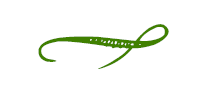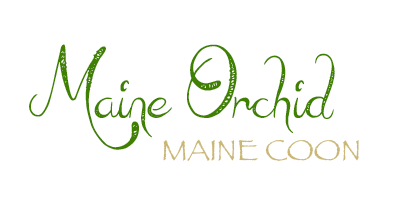
When we discuss pure breed cats we need to remember that we are breeding with a limited group of individuals. This increases the risk for genetic diseases, since pure breeding is a form of inbreeding.
All traits are under the control of genes. These gens are present in all cells of our body - some cells express some genes and other cells express other genes (this is what makes a liver a liver and not a brain). Some traits are determined by one gene, other traits are determined by a combination of several genes. Some genes are expressed short periods of our lives, others are expressed from the day we are born until the day we die. Almost every gene is present in two copies, one from our father and one from our mother. In some cases both copies are expressed, in other cases only one. Which genes that are inherited and which genes that will be expressed are due to chance, coz nature likes variation and diversity. It is nature that decide which individual is the fittest based on its genetic background, if it's not interfered by us.
But humans like to play god. We chose to breed with a limited group of individuals and thereby we change natures selection of the cats and which genes that should be inherited to the next generation. Therefore, we have a huge responsibility to prioritise healthy cats in breeding, and to keep inbreeding low for the sake of the coming generations. It's the cats that have to live with our mistakes...
Historical and present selection for appearance
According to resent research it's believed that the cat was domesticated 9000-10000 years ago when humans settled down. It was probably beneficial for the cats to live there due to prey in the human dumpsters or storages of seed. Selection for tameness has likely continued from that. It was not until the nineteenth century that the cat was recognized and breed based on its look or appearance, even if random genetic drift at that point already had created breeds such as Korat, Siamese, Sacred Birman, etc...
The first organized cat show was held in 1871 at Crystal Palace in London. Back then focus was on colour, pattern or length of the cats fur and the cats were breed based on those traits. This kept the genetic variation high, since the breeding population was large. The breed of the offspring was determined based on its look rather than its parents. You could mate an Angora with a Maine cat (which they were called then) without anyone thinking you were nuts or believe you did something wrong. Today breeding is a lot more different, since the breeds are kept separate and often isolated from each other. Each breed has its own set of accepted colours, patterns or length of fur. It is no longer, in most cases, allowed to breed with a cat of another breed and determine the breed of the offspring based on its looks. Also, few of the breeds are open for new foundation, even if typical cats of the breed can still be found in the original part of the world where they came from. This result in a more or less inbreed group of cats, since no new blood is added to the breed.
Today, 150 years later, the main focus of the feline organisations is still the outer appearance of the cats, not how healthy it is or if it gives healthy offspring. It's the looks that are praised for in cat shows and the trait breeders are encouraged to breed for. According to researchers this is why we today have some breed specific health issues, such as for example hip dysplasia, since our selection for genes controlling the looks of the cat have also selected for other genes. This was not the intention, but they have been selected for anyway. The reason for this is that all genes have "neighbour genes" in the DNA. When we select of one trait the neighbour genes controling this trait will be selected for too, since that is how the biology works. In some cases these neighbour genes have carried a mutated form of a gene, causing a problem when this mutation is more frequent in the breed. If we select very hard for the trait we want and/or a very few cats are used in breeding then the mutated neighbour gene may become a lot more frequent within the breed - voila, we have selected a breed specific problem we did not intentionally select for.
Breed specific inbreeding coefficients
Clones
Its not really cloned cats we are discussing when we talk about the "Clones" of the Maine coon, even if it's close enough. The Clones refer to the kittens after repeated combinations between Heidi Ho Sonkey Bill och Tanstaafl Polly Adeline. These two cats were mated in the end of the 1970's and early 1980's. The reason that the offspring are referred to as the Clones is said to be that some of the were present at the same cat show. A judge thought they were very similar and asked, with a jest, if they were cloned...
These cats have had a large impact on the breed. They and their offspring were well thought of and praised at cat shows. Hence, "everyone" wanted a Clone in their pedigree and the look they had were enhanced in the cats by line breeding (inbreeding). In the 1990's it was calculated that 30-35% of the pedigree of an average Maine coon can be traced back to these Clones. This has not changed much if you do the same calculation today. "But for crying out loud! This was 30 years ago!!!" Do this really affect the cats today? But, well it does, this is one of the genetic bottlenecks of the breed that we need to work with today. Malin Sundqvist (Dagdrivarn) once made a rather smart comparison to a dough. All of the Maine coons is represented in one dough. We spice this dough with some salt (the Clones), just to spice it up a little. Well, some salt was really nice so we added some more, some 30-35% more. And how much me work with this dough it will not get any less salty, even 30 years later. In order to reduce the salt in the dough we need to add dough that has no salt in it - for the Maine coons this imply new foundation or the use of lines not previously mixed with the Clones.
Top 5
The inbreeding coefficient give a general estimation of how much cats within a breed are related to each other. Different breeds have different values of the total inbreeding, which will reflect the breeds unique history how they were once founded. Maine coon is not an "invented" breed, it was and still is present in North America. It is classified as a natural breed and should, hence, have a rather large genetic diversity to fall back on. There should be a lot of founders of the breed. However, this is not the case today.
At about the same time you discover the Clones you tend to read about the Top 5. This refers to the five cats that are today considered to be the founders of the Maine coon. They are represented more often in the pedigrees than other Maine coons. The cats are:
1. Andy Katt of Heidi-Ho
2. Bridget Katt of Heidi-Ho
3. Dauphin de France of Tati-Tan
4. Tatiana of Tati-Tan
5. Whittemore Smokie Joe
In the 50's and 60's there were a lot of founders of the breed. If you had a longhaired cat in the barn that resembled the Maine coons it could very well be used in breeding. Today it's mainly five of these founders that remain, the rest of the lines have scattered and ended over the years. One of the reasons for this is probably the frequent use of the Clones, which led to less use of the other lines.
In the 90's it was calculated that the following frequency of the top five cats was present in an average Maine coon pedigree:
Top5: 65-70%
Top3: 50-55%
Top2: 35-40%
This frequency have not changed much in 30 years, only the variation seem to have changed - towards a lower variation. In some ways that is not so surprising, since not that much new blood is added. However, I had thought that the new foundations brought in should have had some impact, but obviously not enough.
Why new foundation?
If we should continue to breed only the cats we have in the breed today we may end up with inbreeding depression (worst case scenario). Why? Well, we still work with the same dough, and it's still salty, it may even get saltier. New founders/foundation will help us lower the inbreeding coefficients of the breed (they will add unsalted dough) and increase the genetic variation. Some breeders find this to be very negative and point at the fact that new genetic diseases may be added. This is true, new defect genes will be added to the breed, but most important of all new healthy versions of the genes will be added too. Not all genes we have in the breed today are healthy... People tend to forget that sometimes.
The cats that are chosen as new foundation have been shaped by nature, and are in some cases stronger survivals than the Maine coons we have today. And as long as we breed with diversity of the breed as our main focus then the negative (and often recessive) traits the cat carry will not affect the breed more than any other defect genes we already have in the breed will.
Line breeding tends to result in less variation and a more homogenised appearance of a trait, such as eye shape, nose muzzle, ear set etc. The frequent use of the Clones is probably one of the reasons for the stable look of a Maine coon with Clone-coefficients around 30%. As soon as you start mix that up with new foundation you will get more or less variation of the cats look, since the genes will no longer be fixed for these traits. Lets compare with siblings… Identical twins share the same gene-set and pretty much look rather identical. If you compare to full-siblings you loose some of that identical appearance, even if the gene-set is still much related between the two siblings. If you compare the full-siblings to the kids next door, they may still share some traits, such as hair or eye colour, but will be much more varied in most of the traits. If we work with the same, or almost the same, gene-set in our cats we will not get much variation in the look of the cats. This is why cats with new foundational origin not always turn out to be the perfect show cat, since its looks may no longer be so homogenised as the judges expect it to be, based on how the rest of the Maine coon population nowadays look. In SVERAK you need to have the cat approved for breeding before you breed it, that is, if it has less than five known generations in its pedigree. The “flaws” in looks is something we will have to work with. If we try to “fix it” fast, and quickly force the cat back in the same shape as the other cats of the breed, then we tend to not respect the genetic variety in the breed. My opinion is that we have years to slowly adjust the looks of the cats, as long as we make sure the cats we use have the healthy prerequisites to do so. And I also believe that we should accept some variation in the look of the cat, it’s a natural breed to start with, and they are not made out of moulds and plaster.
